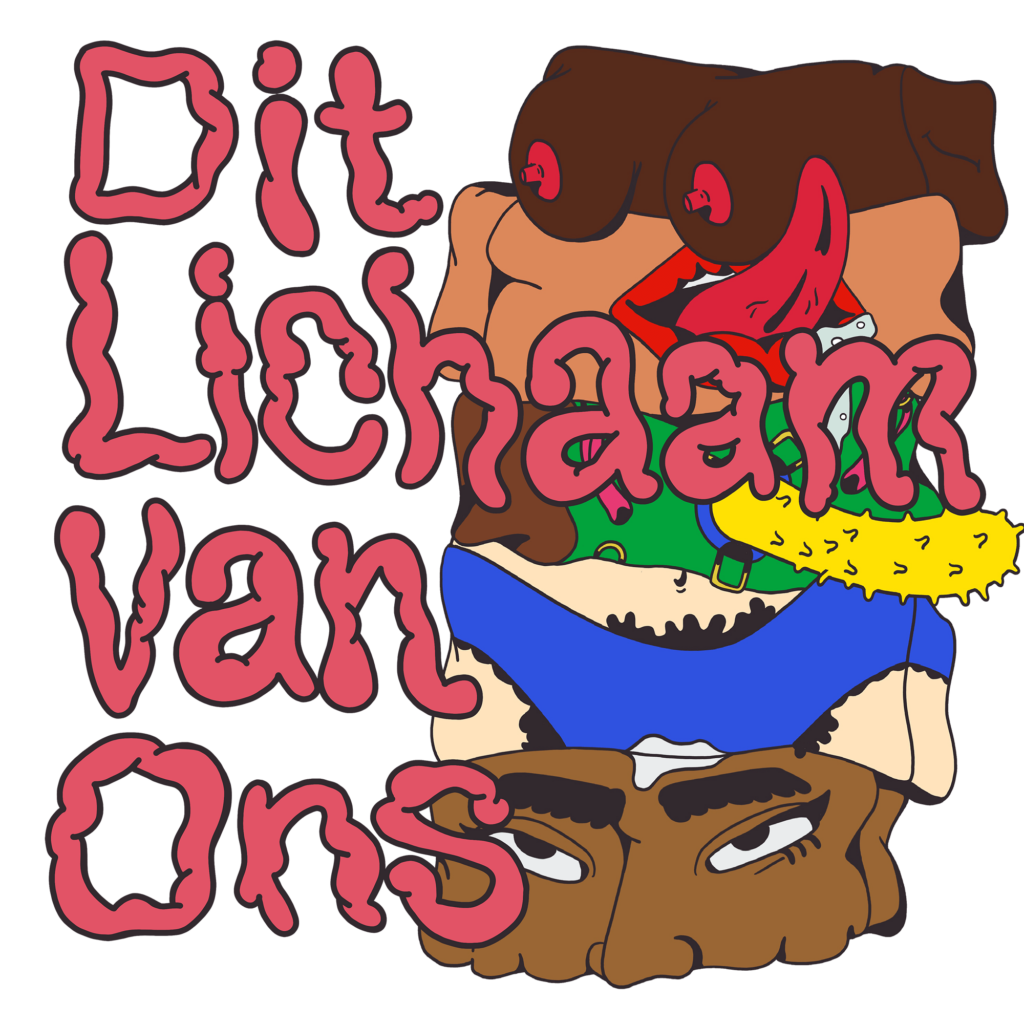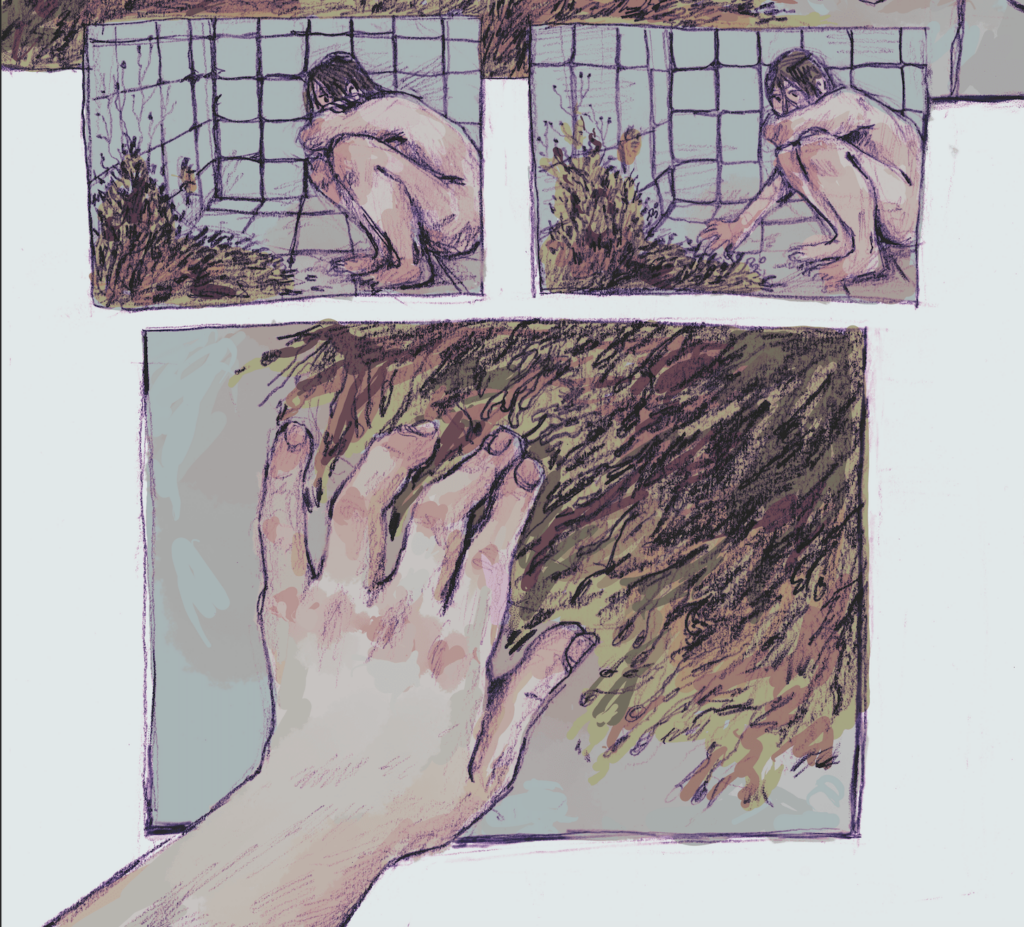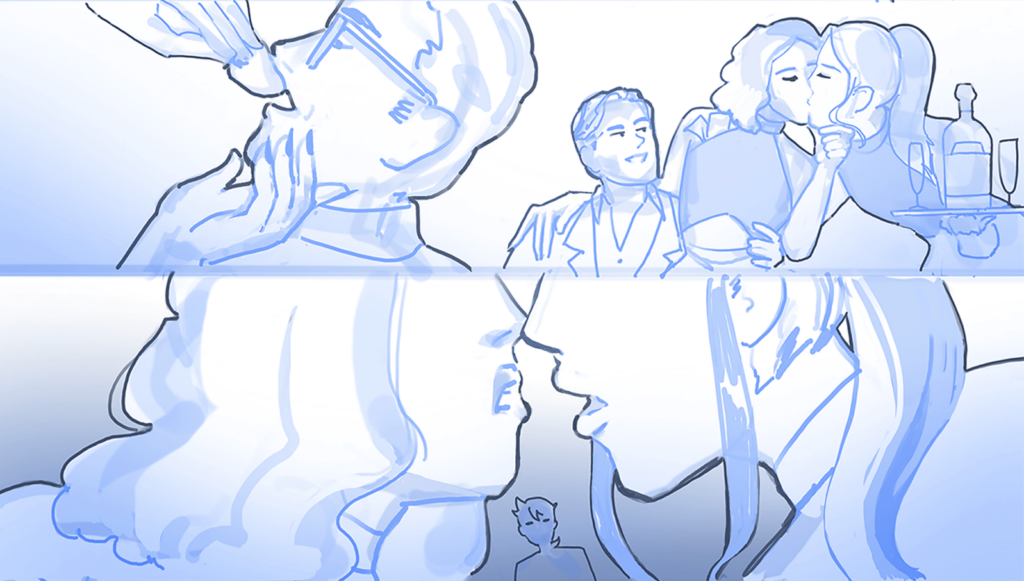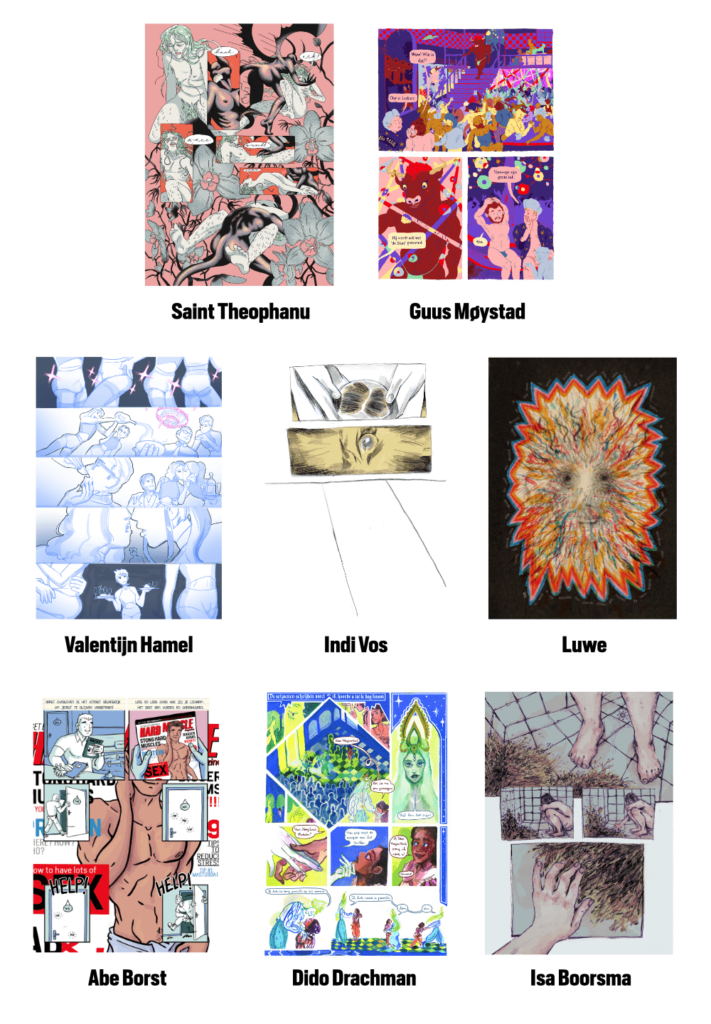Queer History Month and Comics Anthology ‘THIS BODY OF OURS’ by Gus Møystad

Last Friday the 1st of March marked the beginning of Queer History Month 2024 in the Netherlands. It has been organised since 2021 by the Dutch LGBTQI+ heritage organisation, IHLIA, in order to keep queer themes, topics and history in the public eye also outside of Pride month.
It is in that spirit that I want to introduce ‘This Body of Ours,’ a forthcoming anthology of comics by a group of upcoming, queer Dutch comics artists. We’ve spent the past 6 months developing the stories for the book, inspired by comics’ pulp history, with a queer twist. The resulting stories feature zombies and femboys, latex demons and fungal clones, saccharine (but toxic) romances across time and space, magnetic hairs and loving lust, and don’t shy away from pornographic content.
However, there is more to the project than titillating the senses. It is also a response to the ongoing struggle that I both feel and recognised in other young/emerging artists, and artists from minority groups, in the Dutch comics scene. We can either not find opportunities to make work that truly represents the diversity of the field – or, if we can, we’re expected to work for a pittance or nothing at all!
For this blogpost, I had a conversation with a couple of my colleagues who I had invited to join the project; Isa Boorsma, final-year student at Dutch art academy ArtEZ, and one of the youngest artists in the project with their contribution of the gender-exploration-as-horror-story ‘By Touch’; and Valentijn Hamel, a comics- and drag-artist who has been working in the field since his graduation from Willem de Koning Academy in Rotterdam in 2020, who wrote and illustrated the story ‘Femboy Foyer.’
It has been an interesting and challenging process to create comics at once so intimate and so over-the-top. As Isa pointed out:
The themes were a challenge! Gender, the body, pulp and sex; all things that I don’t understand, that I’m still struggling to get to grips with. At first I was worried I wasn’t suited for the project, both because of my age, and because of where I stood in relation to sex and my own body. It felt like I stood at the edge of a massive cliff. It was a long time before I realised that it was exactly this struggle between fascination, repression and insecurity that was interesting to explore in my story.

However, for most of the artists, the project mostly felt like a liberation. Valentijn explained that ‘the core concept of “This Body of Ours” created some breathing room for a nervous writer like me. Without it being my intention, the story ended up reflecting many of my uncertainties and desires as a drag-artist and trans-person. I’d usually never dare to write a comic about this, even though these themes are often central in my drag performances!’

This was a response I heard again and again in my role as project leader. The artists had never had a paid opportunity with full creative freedom – in particular when it came to sexual or queer themes – and responded with enthusiasm. For myself, it was a confirmation that I was not alone in my need to explore the less ‘respectable’ sides of the medium. Of course, comics history is, despite what proponents of sanitised phrases like ‘graphic novel’ and ‘sequential art’ suggest, primarily one of commercial and low-brow pulp. That is something to be celebrated.
This is especially true when it comes to queer comics, which long found the only platforms willing to publish their work were pulp or underground publications. Cartoonists like Tom of Finland could publish their work in popular commercial ‘beefcake magazines,’ and the underground comix scene of the 70s and 80s saw the proliferation of self-published gay and lesbian zines.
It hasn’t all been a clean progression since then, however. In the current political climate we’ve seen recent backlashes against queer artists and writers. In particular, those who dare to write both for children, and explore sexual themes or sexually charged work have often faced vile and threatening accusations. For this reason, a couple of our own artists have had to publish their work under a pseudonym.
Challenges notwithstanding, however, the truly astounding response to our project has been one of overwhelming support and encouragement. Not only from the Dutch comics world and from our queer communities, but also from official grant institutions like the Creative Industries Fund NL, the Amsterdam Fund for the Arts and Pictoright Fund. These have ensured that we’re able to pay all the artists fairly and in this way begin to change the narrative that we as young, queer artists have gotten too used to – that our comics are not worth paying fair wages for.
For the printing costs of the book, we’re currently running a crowdfunding campaign on crowdfunding platform Voordekunst. Visit the page for more information about the project and to peruse the various perks we are offering in return for donations, which run from the book itself, and an exclusive limited edition A3 print, to original artworks from the creation of the stories!
Check out our Instagram, and please consider donating what you can to make our dream come true!
Happy Queer History Month 2024!




